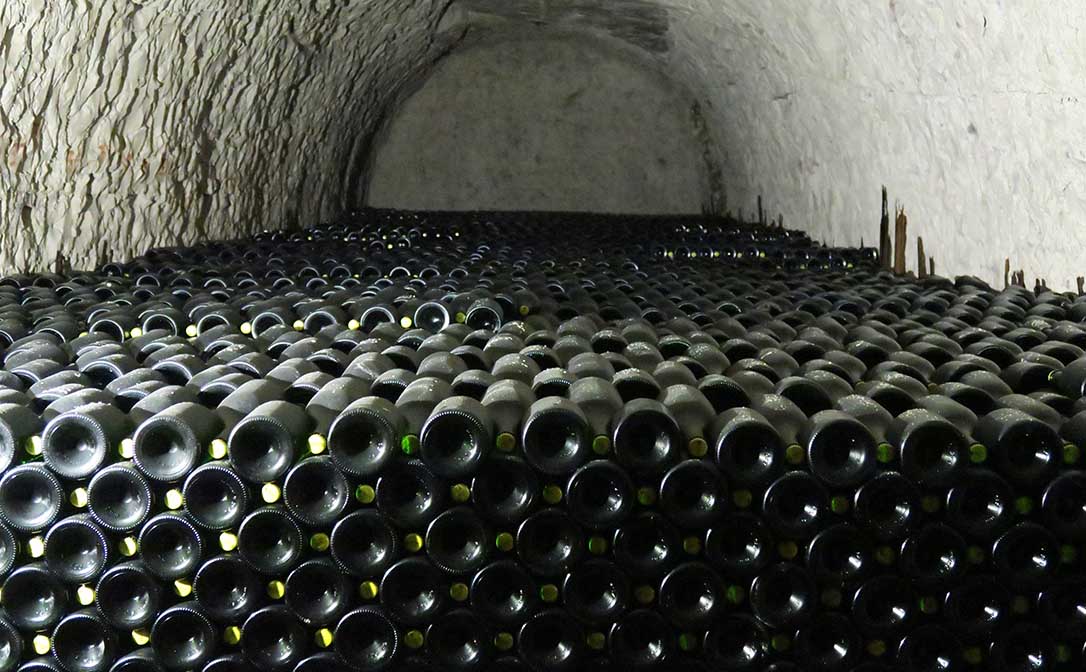Anyone who enjoys a glass of wine will be familiar with words like ‘citrusy,’ ‘herbal’, or ‘spicy’ being used to describe the wine’s aroma. But considering the fruit that wine is made from, the word ‘grapey’ is rarely used – so why is that?
Most wines don’t taste much like grapes at all, except for a small number made from certain white grape varieties (Moscato or Muscat being the most famous). So, what does wine taste like?
When we smell a wine, we may encounter aromas that remind us of any number of fruits, herbs, vegetables, spices, meats, minerals and more.
The reason for this has to do with the science of winemaking and maturation. During these processes, aromatic compounds are created or imparted into the wine that can also be found in those familiar plant or animal-based products. Wine ‘aromatics’ can be clustered together into groups such as esters, pyrazines, terpenes, thiols and lactones. To keep things (relatively) simple, let’s focus on the key sources of aroma in most wines.
The grapes
Some of the final wine’s aromas can be detected in the grapes themselves. The black grape variety Syrah’s distinctive black pepper aromas, for example, can sometimes be detected in unfermented Syrah grape juice. Similarly, a Sauvignon Blanc grape might have some of the grassy, green pepper aromas that are so familiar in the dry, aromatic wines it tends to produce.
Curious to discover more about the basics of grape growing and wine tasting? Our internationally recognised Level 1 Award in Wines will give you the foundation of knowledge to begin your journey in wine.
Click here to find out more.

Syrah grapes on the vine
The fermentation
When grape juice is fermented, many changes occur within the liquid. The most famous transformation is the conversion of sugar to alcohol by the action of yeast, but fermentation is also when many of wine’s aromatics are created.
Some aroma compounds are released during fermentation from ‘precursors’ that exist in the grapes. The heady floral aromas you find in some white and red wines are examples of these.
Yet more aromas are created not from the grapes themselves, but from the many complex reactions that occur between certain acids and alcohols as fermentation progresses. The resulting fruity ‘esters’ give us aromas akin to apple, pineapple and banana, commonly found in young wines.
The fermentation vessel, temperature, and type of yeast all have a role to play in determining which aromatics are enhanced or subdued during fermentation.
Post-fermentation winemaking
Decisions made by the winemaker after fermentation is complete can add further aroma complexity to a wine. For example, wines that undergo a process called ‘malolactic conversion’ may have buttery aromas, while wines that are aged in new oak barrels may take on aromas of vanilla from the oak.
Bottle maturation
Once the wine is bottled, its aromatics continue to change due in large part to exposure to oxygen, heat and light. Typically, the fresh aromas it had in youth lose their intensity over time.
If stored correctly (somewhere cool, dark and undisturbed), some high-quality wines may hold their freshness for years or even decades, while chemical changes occur, that create even greater aromatic complexity in wine tasting.

Traditional method sparkling wines are often aged in cave-like cellars for optimal storage conditions
The science of grape growing, winemaking and maturation is very complex, and it is for this reason that no two wines are exactly the same. The potential for endless aroma and flavour combinations being created from a single fruit is what makes wine such a fascinating drink!
Written by Lucy Stevenson DipWSET DipIDM, Regional Marketing Manager - EMEA
Related content:


